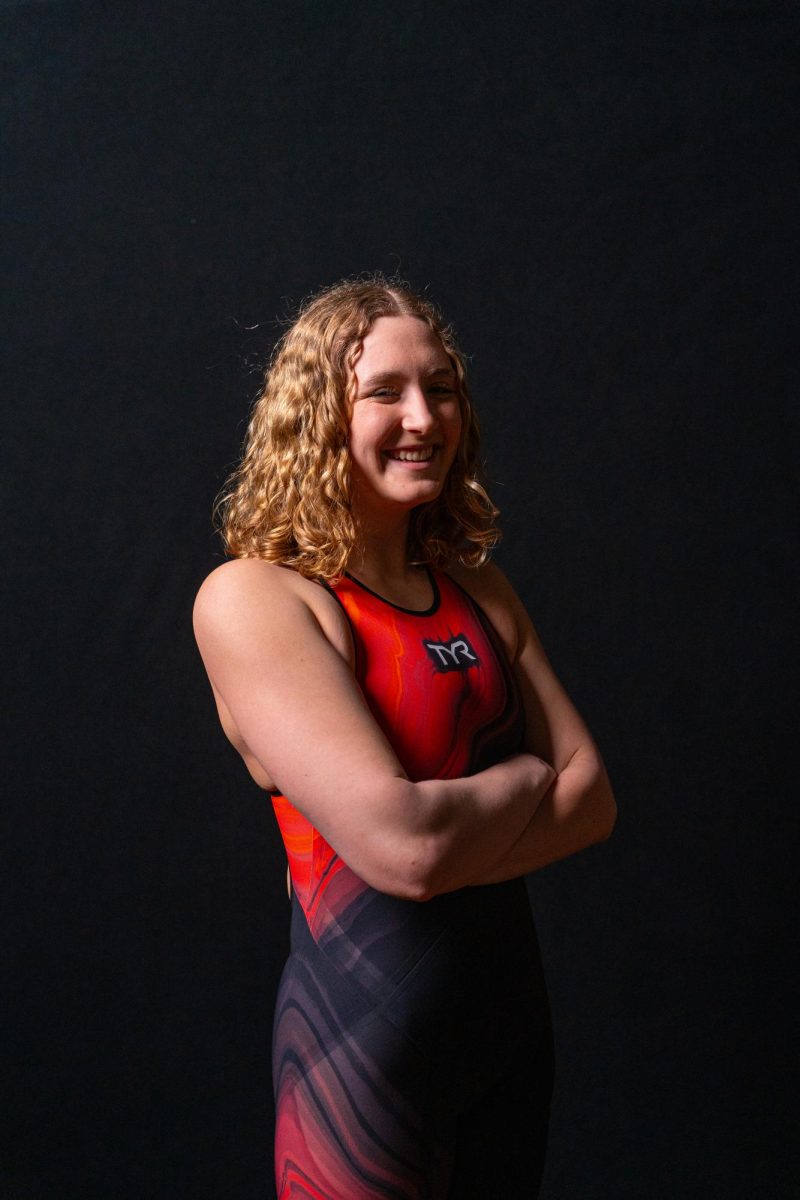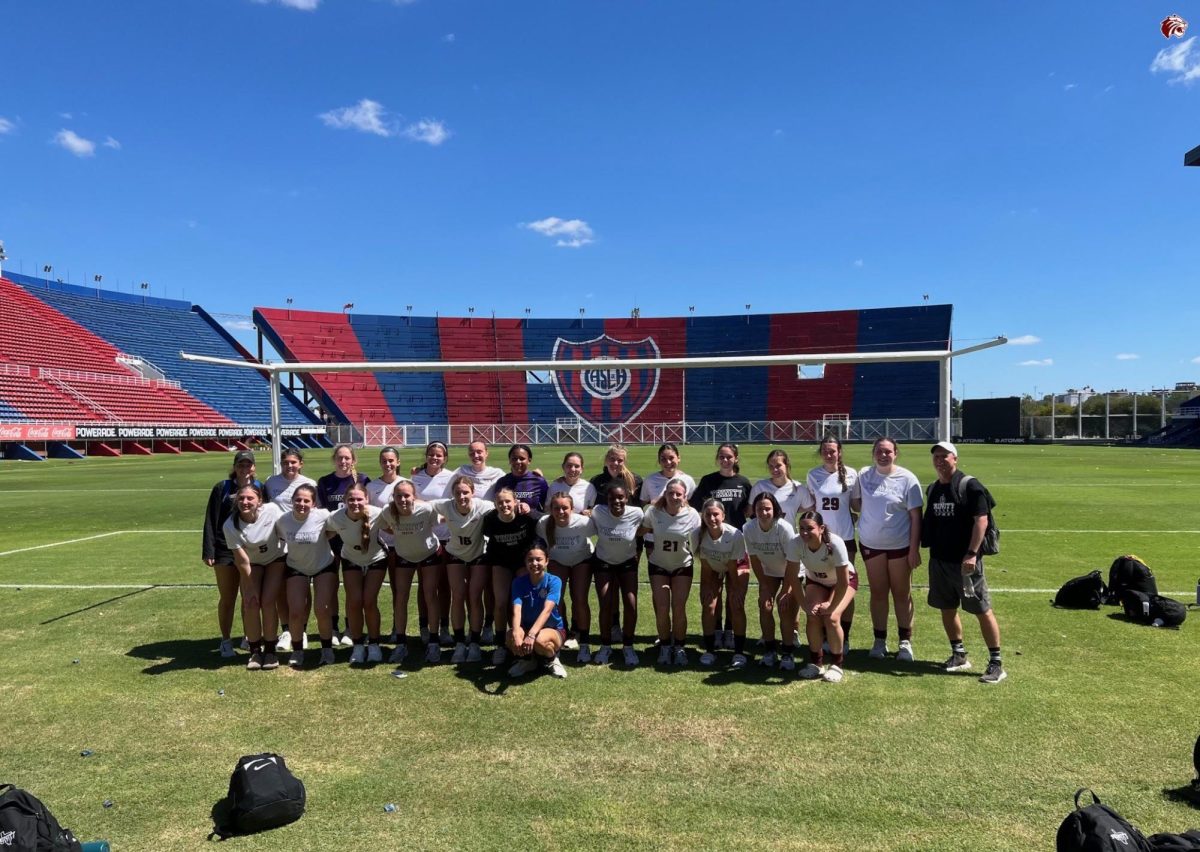Photo by Kate Nuelle
The start of the spring semester means it is officially lacrosse season. Although Trinity does not have a varsity lacrosse team, students are still able to enjoy and play the sport through Trinity’s men’s and women’s club lacrosse teams.
The men’s club lacrosse team opened the 2020 season with a loss against the University of Texas at San Antonio (UTSA) on Jan. 25. The game was the first of five currently scheduled through the Men’s Club Lacrosse Association (MCLA), which is the national association for club lacrosse. This Sunday, Feb. 9, marks the team’s first divisional game against the University of Incarnate Word (UIW) on the Tigers’ home turf.
Lacrosse is open to all students through either the men’s or women’s club teams. Outside of the general differences between men’s and women’s lacrosse, the teams have very different histories on campus. According to junior men’s team captain Henry Kneidel, Men’s Lacrosse had long been at Trinity before a lengthy hiatus that ended around 2014.
“[Men’s Club Lacrosse] was in existence for a long time, for like 25 to 30 years before finishing in 2002. Then it took a break and came back six or seven years ago,” Kneidel said.
In contrast to the men’s team, Women’s Lacrosse only recently got off the ground in the spring semester of 2019, thanks to the efforts of sophomore Natalee Weis and current co-captains junior Georgia Wright and sophomore Mariel Clark, who got help from Kristen Harrison, the associate athletic director for Recreation and Sports Camp.
“Mariel, Georgia and I all played in high school and wanted to try and start a women’s lacrosse team at Trinity. I really wanted to be able to continue playing in college, and I wanted there to be a team established so girls that were interested in playing lacrosse had an opportunity to do so,” Weis said.
Although the women’s lacrosse team garners a lot of interest from potential players, they have been unable to gather enough team members to play competitively, according to Clark.
“We get a lot of people interested. During club fairs, hundreds of people sign up. We have a lot of girls in the GroupMe,” Clark said. “But who shows up and who actually commits, we have about six consistent girls. Could we actually play and field a team? Right now we can’t.”
Because the women’s lacrosse team cannot currently field a team, they cannot compete in a league or even against other schools.
“Once we get more girls to join the team and regularly come to practices, we will be able to start playing games against teams like UTSA and grow the program for the future. It’s a great group of women who play, and even if you have no experience they can teach you the basics, so I encourage anyone to come try it out,” Weis said.
As a result, the team’s focus is on building a community and developing skills rather than winning games.
“Right now it’s really about getting interest, letting people know that we’re here, but also making sure we have those girls who are committed … We just want to have fun. We just want to play, even if we can’t play a game right now … We just want to play, have fun, practice and really make it a community,” Clark said.
The men’s team, in contrast, competes against other university club teams — namely, UTSA and UIW — in pursuit of the San Antonio Taco Trophy. The Taco Trophy was created in 2017 by the San Antonio Tacos Lacrosse Club to celebrate collegiate men’s lacrosse in the city.
“The Taco Trophy [determines] the best team between us, UTSA and UIW. So yeah, it’s a goal,” Kneidel said. “I heard [the club] is getting tacos for the winner this year.”
Neither team requires any prior experience and is open to lacrosse players of all ages, according to Kneidel and Weis.
“It’s exercise, very low pressure. More than half the guys have never played before. More than half the guys hadn’t played in high school. Most of them are new,” Kniedel said. “It’s very low-key. There’s no penalties for not going to stuff. It’s all the good parts of playing a college sport and none of the bad parts.”
Both lacrosse teams are looking to grow and gain more members. With that goal in mind, the men’s team has started advertising with T-shirts and flyers.
“We’re trying to get as many people wearing stuff and the words ‘Trinity University Lacrosse’ in as many places as possible. It’s not complicated marketing, but it’s more than what we had before. And if it gets two guys [to join the team] it’s worth it,” Kneidel said.
The mindset behind the campaign aims to be inclusive of the girls’ team as well.
“We don’t put ‘Men’s Lacrosse’ on any of the shirts or flyers because if they grow, we grow,” Kneidel said.
Despite having two very different clubs, with very different histories and goals, Trinity Lacrosse has a united front in growing their programs and furthering the love of the sport.





